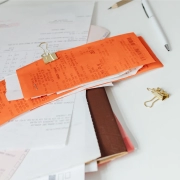
Australia’s economy is growing at a slower pace than many would like, with small businesses in some sectors doing it tough. Recognising the warning signs of potential insolvency is key to trading through difficult times.
Basically, an insolvent company is one that is unable to pay its debts when they fall due.
A company can’t go bankrupt; only an individual can be a bankrupt. However, some individuals may become bankrupt because of debts incurred in their business. According to government statistics, in the June quarter 2019, 18 per cent of personal insolvencies were business-related.
There are many reasons why your company may be heading in this direction and it’s not all down to the economy.
Recognise the signs
Challenges to old business models and new technology may both contribute to a downturn in your business.
Signals that your company may be facing problems include:
- ongoing losses
- poor cash flow
- unpaid creditors
- inadequate financial records
- problems obtaining finance.
If you recognise any of these signs in your business, then the key is to act promptly because there can be penalties if you are trading insolvent and continue to incur debt.
Penalties include:
- civil penalties up to $200,000
- compensation proceedings
- in some cases, if you are found to have acted dishonestly, criminal charges including up to five years’ imprisonment.
What now?
Safe Harbour provisions give directors an exception from insolvent trading liability where they are developing a course of action which is reasonably likely to lead to a better outcome than administration or liquidation.
The legislation is aimed at encouraging a culture of restructuring to deliver a better outcome when a company is in financial distress.
If, however, there is no way forward for your company, then the choices are:
- voluntary administration
- liquidation
- receivership.
Voluntary administration is where an administrator is appointed to take control of your company to try and get it back on track.
Liquidation is what happens if your company can’t be saved by the administrator. The company will be wound up and debts repaid either in full or in part.
Receivership is when a secured creditor decides to appoint someone to collect and sell your company’s assets to recover their monies.
Strategies to stay afloat
It’s estimated there are 2.1 million small businesses in Australia. In the 2017-18 year 54,992 businesses unfortunately went under, with the retail sector the most vulnerable. Retail companies folded at 1.5 times the rate of other small businesses, which was an increase of 12.7 per cent over the previous year.i
Hopefully, you can arrest any problems before it comes to this and there are a number of strategies you can introduce to get your company back on track.
They include things as simple as:
- making sure you have a good system so you can monitor your income and expenditure
- keep a regular eye on your company’s performance so you can identify problem areas swiftly
- seek advice from us early in the piece can ensure that you nip any problems in the bud
- preparing weekly cash flow forecasts can also help you monitor what has to be paid and when it’s is due. This will stop debts getting the better of you
- consider selling old or excess stock to help improve your cash flow
- have solid procedures to collect outstanding debts and stick with your strategy.
Seek help
You also have the option to freeze your debts for a period of 21 days through a declaration of intention. This may give you time to consider how to manage your debt.
Your bank might offer an overdraft to help you over a rocky patch.
If you have any financial concerns about your business, then call us sooner rather than later to see if we can help you weather the storm and keep your business afloat.
Let’s stay in touch
Sign up to our monthly newsletter here to receive due dates, news, tax tips and other important things that we think are useful and interesting.
This article was written by a third party.
i https://www.abc.net.au/news/2018-10-31/small-business-failures-on-the-rise/10447846











